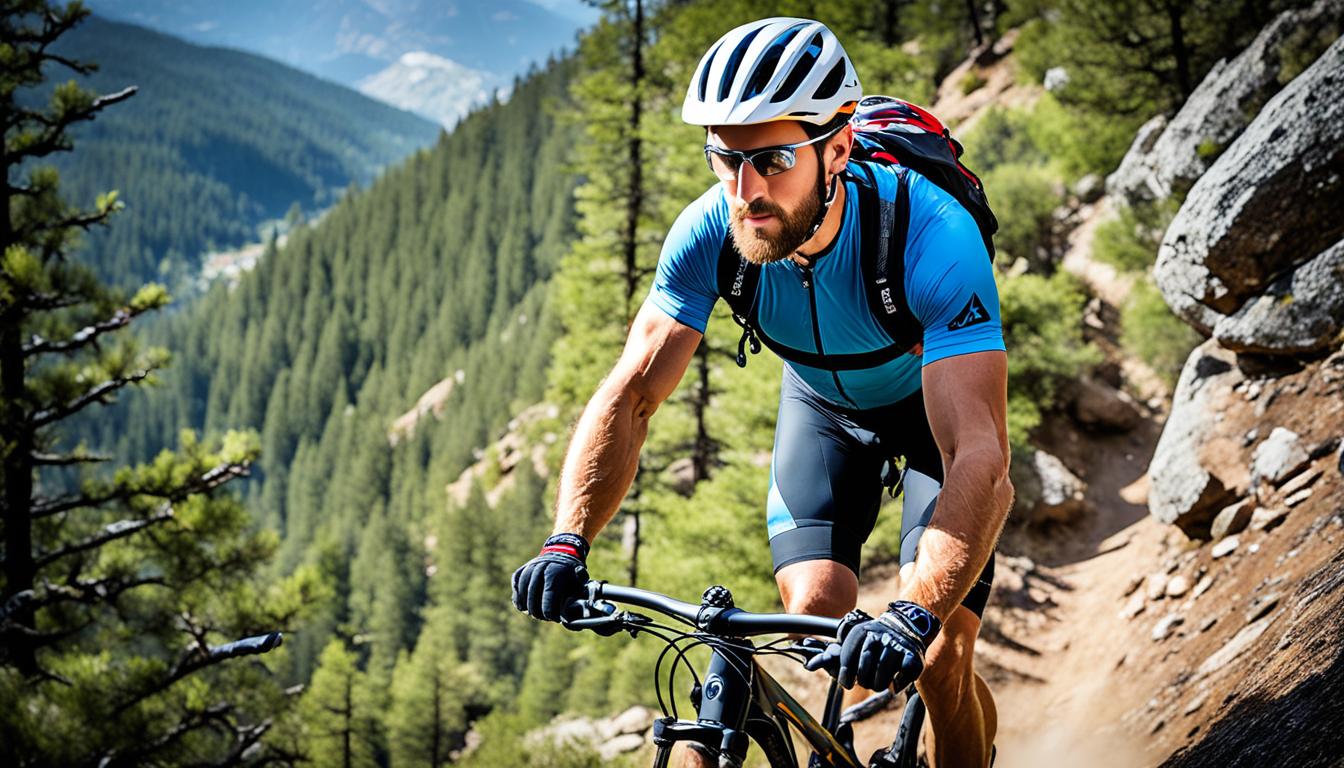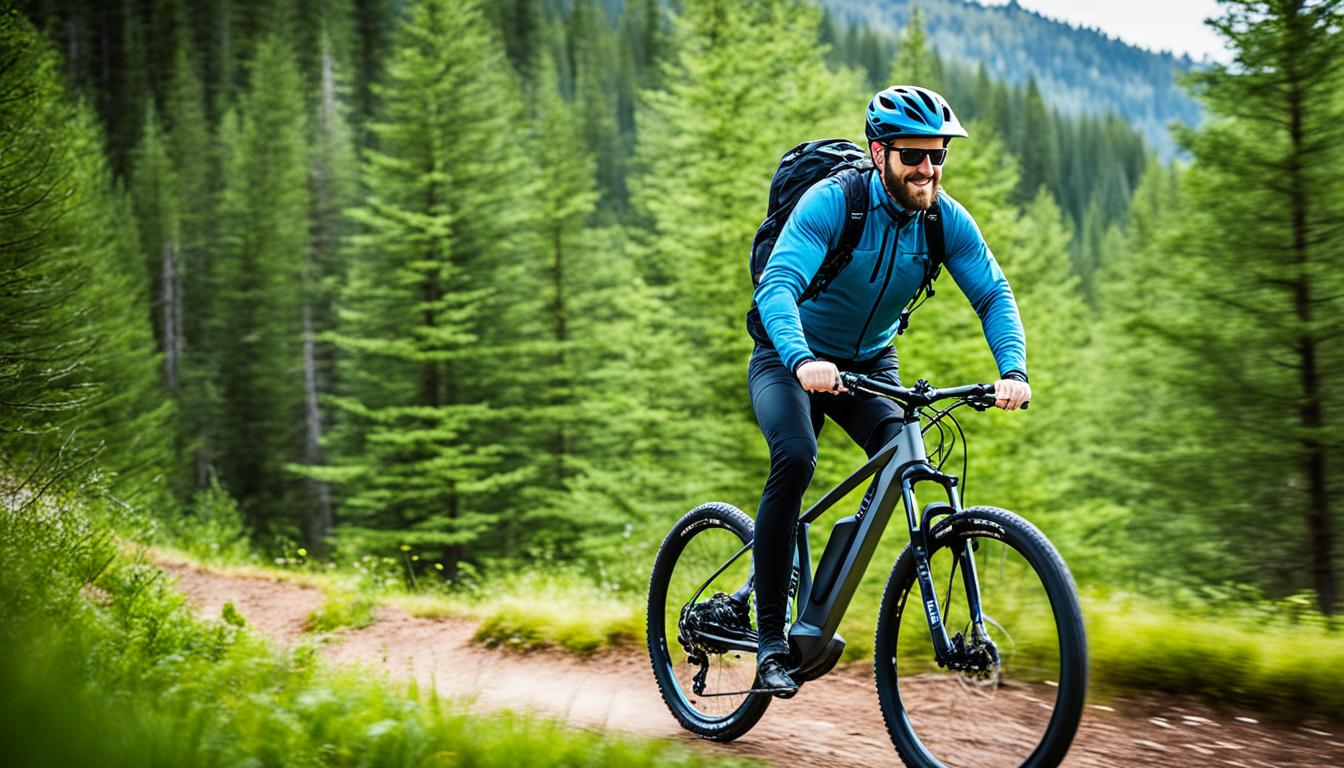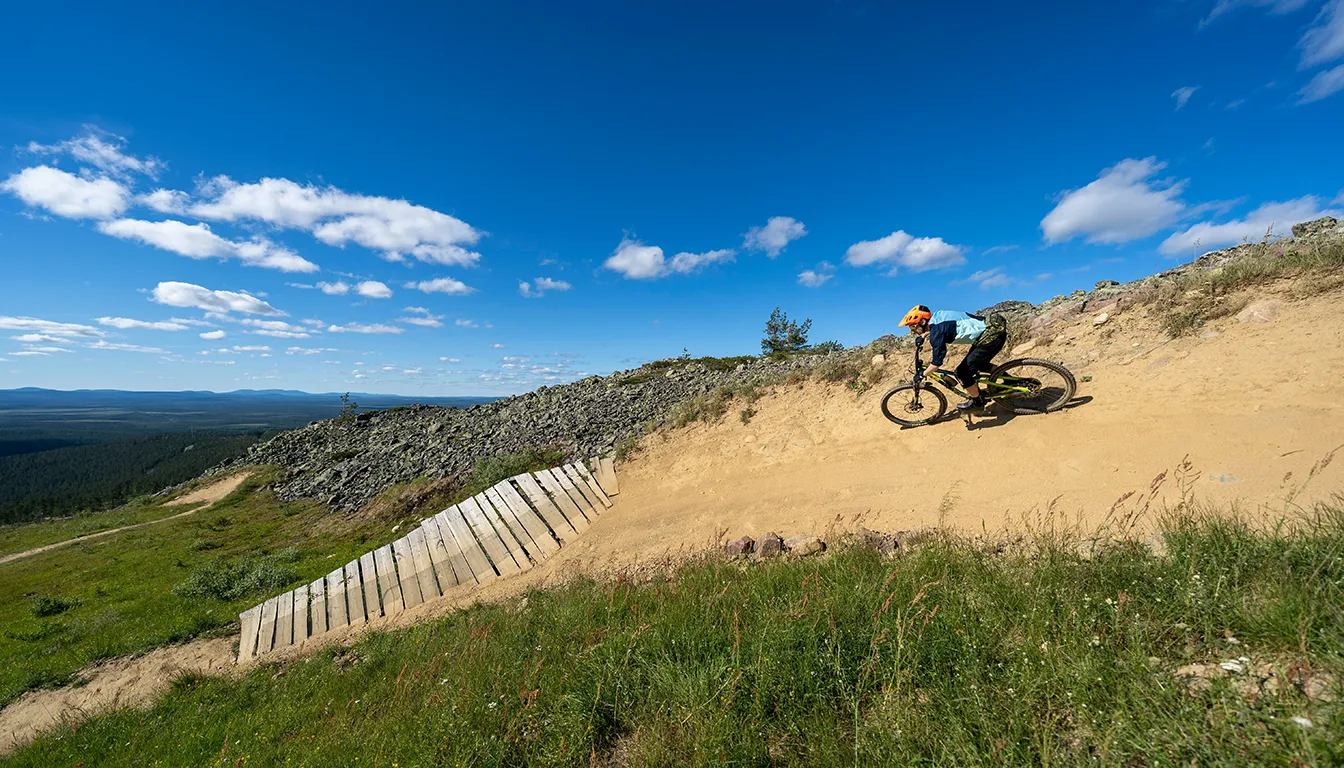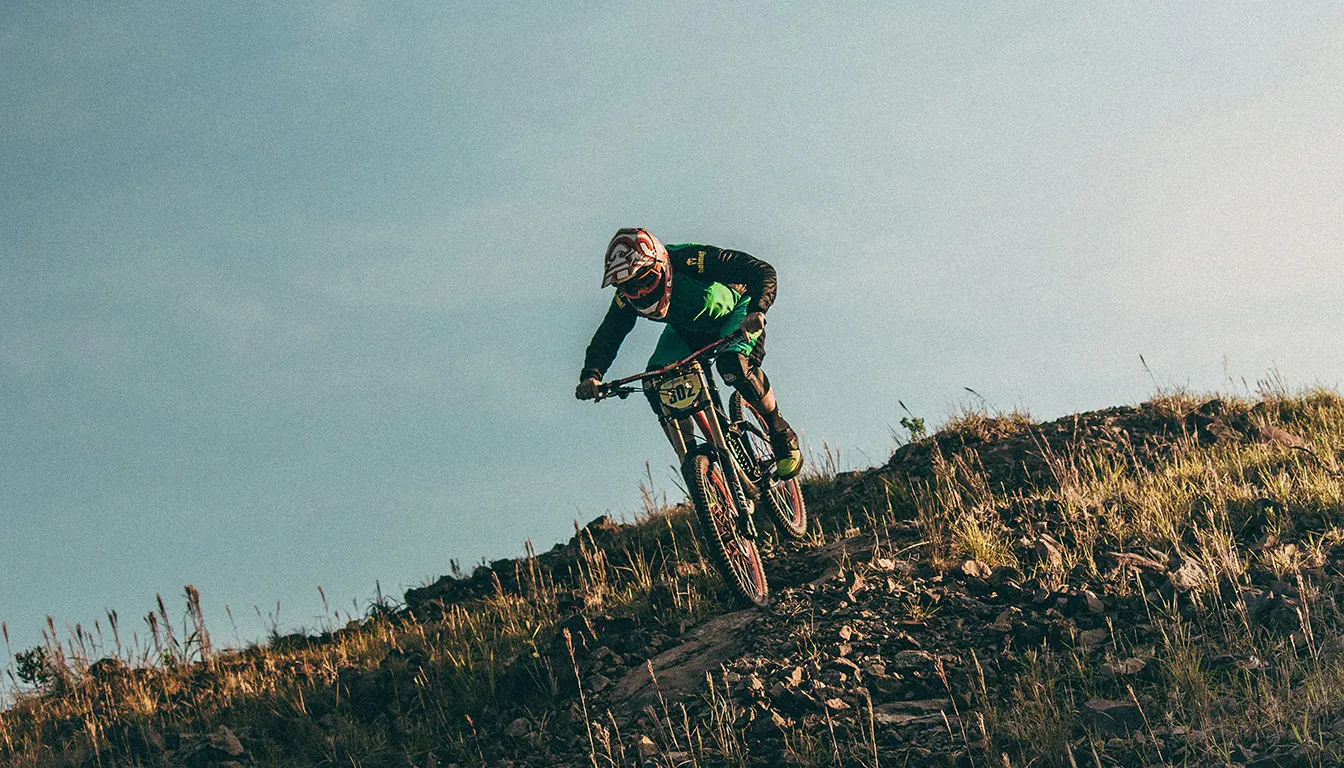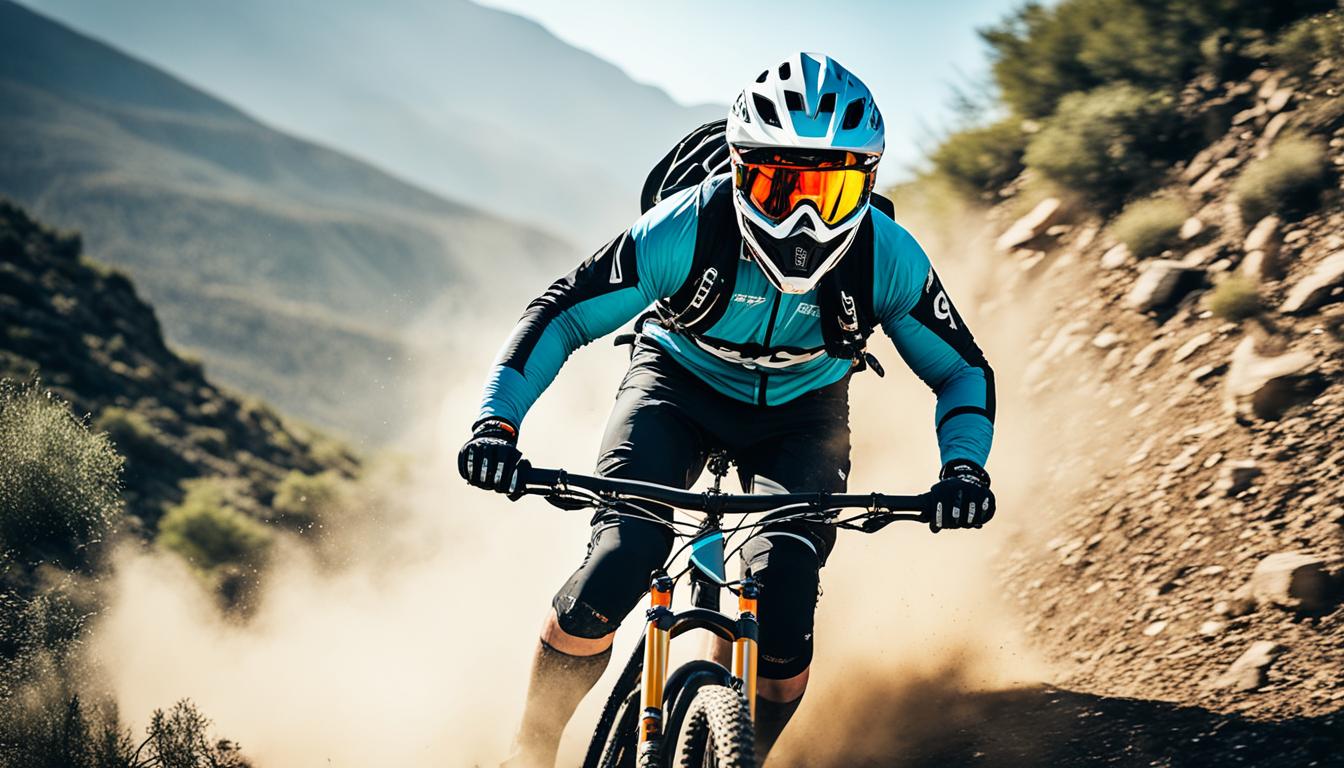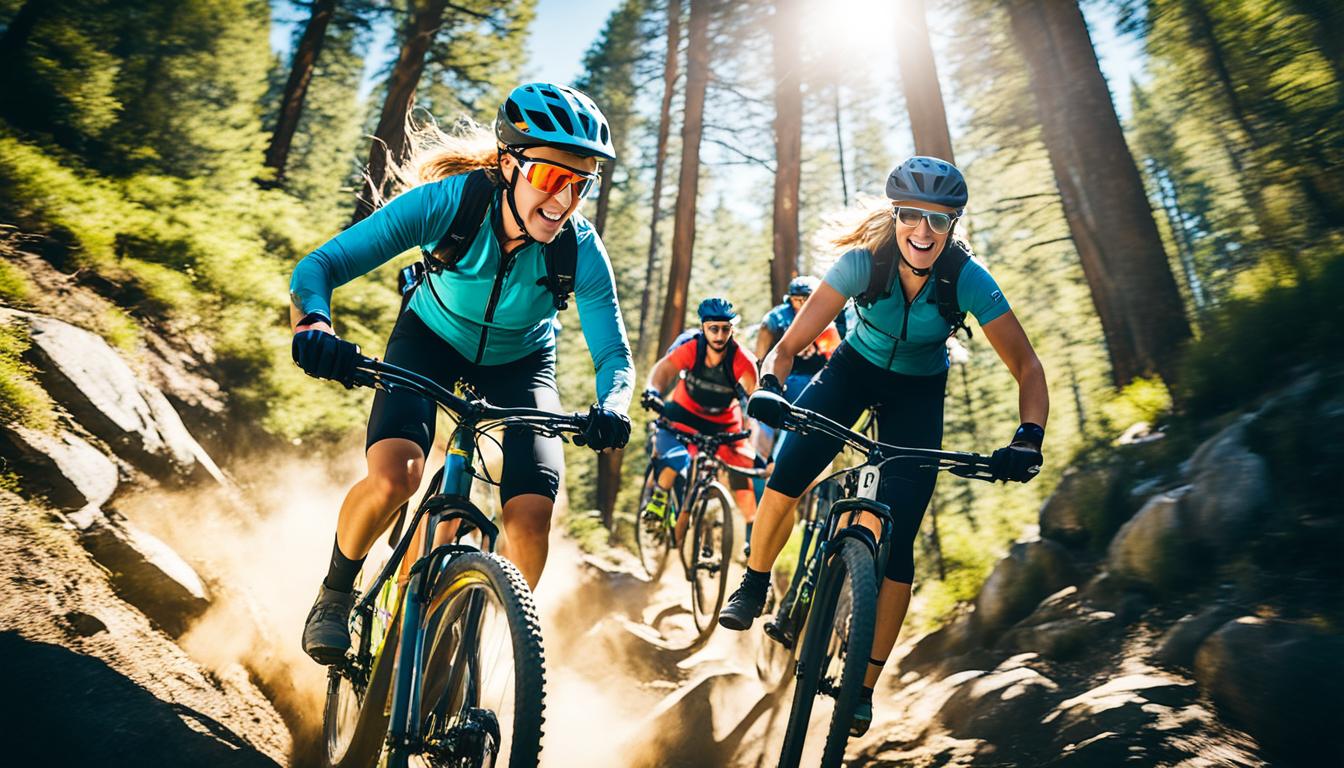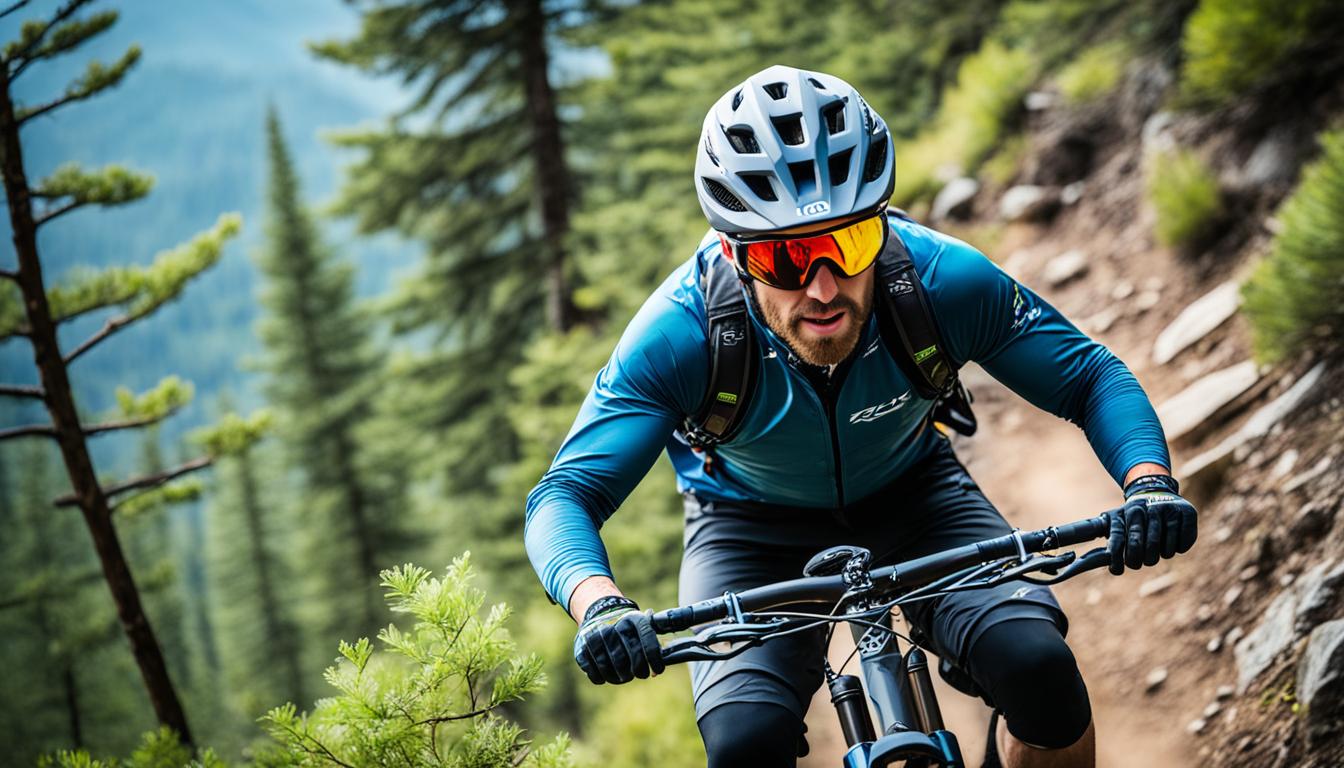Enduro mountain biking mixes technical skill with the need for endurance in long races. This sport is becoming more popular, and riders want to get better at it. They face rough terrains in races that last 3 to 4 hours, covering 20 to 60 km and climbing up to 2500 m. To do well, riders must practice endurance and improve their technical skills.
To do well in enduro racing, understanding the race setup is key. Races have 3 to 6 stages, each taking 3 to 15 minutes. Good preparation improves performance and ensures riders have what they need, like food and water. By working on cornering, choosing the right path, and controlling speed, riders can do better in competitions.
Understanding Enduro Mountain Biking
Enduro mountain biking has become very popular. It mixes speed with skill. Riders race against the clock over several stages, aiming for the quickest total time. These races last from 3 to 4 hours or up to two days. They cover 20 to 60 km across different terrains.
Competitors face timed downhill runs and connecting stages that require pedalling. This mix calls for both endurance and strength. Every stage checks a range of skills for enduro. This includes fast sprints, careful climbing, and quick downhill runs. Being good at these skills is key to doing well in races.
Riders start each stage at set times. This lets them go at their pace while getting better at their technique. The long races mean riders must be fit, as the effort needed is big. This pushes them to practise long-distance riding to grow their stamina.
Firecrest Mountain Biking offers a course that teaches Downhill (DH) and Cross-Country (XC) skills. It’s for every skill level. They’ve been teaching for over 18 years, helping tons of riders get better. Their courses teach important skills like jumps, drops, and handling difficult tracks. This means both new and experienced riders can learn a lot.
Safety gear is really important in enduro biking. Wearing helmets, pads for knees and elbows, gloves, and tough shoes helps prevent injuries. This keeps riders safe and makes sure they have fun facing enduro biking’s various challenges.
| Aspect | Details |
|---|---|
| Race Duration | 3-4 hours or two days |
| Distance | 20-60 km |
| Key Skills | Technical descending, climbing, endurance |
| Bicycle Specifications | Larger wheels (27.5″ to 29″) for stability |
| Safety Gear | Helmet, knee and elbow pads, gloves |
Building a Solid Base Endurance
Improving your endurance is key for enduro mountain biking success. A mix of long rides and intensity training is vital. These methods boost performance and stamina.
Importance of Long Rides
To boost mountain biking endurance, aim for long rides twice a week. Spend 2.5 to 3 hours per ride, focusing on gentle hills.
This technique builds muscle and improves heart fitness. Adding short rides during the week helps more than just doing long rides now and then.
Intensity Training Techniques
Intensity training also plays a big part in getting better. Try to do high-intensity workouts twice a week.
For example, try 10 seconds of hard work followed by 50 seconds of rest, repeated ten times. Alternatively, do 30 seconds of effort with 30 seconds of recovery. This training prepares you for races, boosting your speed and endurance.
Improving your bike skills is also important. Work on bunny hops, track stands, and cornering. This can give you an edge in races.
Looking to hone your skills further? Here’s a guide on essential techniques for mountain bikers. It shares tips on bike setup and how to position yourself for better endurance and skill on trails.
Essential Gym Training for Enduro Riders
Gym training can greatly enhance an enduro rider’s performance and longevity on tough trails. It mainly involves functional exercises and strength work to boost cycling power. Such exercises simulate bike riding motions, leading to greater efficiency.
Functional Training Focus
Functional training targets the specific actions in mountain biking. It includes exercises like deadlifts and walking lunges with a twist. These focus on the muscles used while biking. Improving strength and stability helps riders tackle various terrains. Compound movements also strengthen the core for better control during rides.
Strength and Power Output
Strength training is crucial for increasing cycling power. It involves heavy lifts with few repetitions, like bench presses and squats, to build muscle strength. This helps riders in short, intense efforts. Power meters track progress, aiding riders in measuring their training enhancements.
Core exercises, such as side planks, improve balance and posture, which are key for enduro racing. A good training plan mixes these methods to build the necessary strength and stamina. For a detailed training plan, check out this resource.
| Exercise | Muscle Groups Targeted | Benefits |
|---|---|---|
| Deadlifts | Hamstrings, Glutes, Lower Back | Improves hamstring power and prevents injury |
| Walking Lunges with a Twist | Quads, Hamstrings, Glutes | Activates glutes and promotes stability |
| Side Plank | Core, Obliques | Enhances core strength for better control |
| Renegade Rows | Upper Back, Shoulders | Aids in handling the front wheel |
Selecting the Right Races to Participate In
Choosing the right races can really boost your enduro mountain biking fun. It’s vital to know about the different race types out there. This helps you pick ones that suit your skills and likes. You’ll not just do better but also enjoy more. Riders with a downhill past might like short and technical sprints. Those used to cross-country racing might prefer races with more climbs and less technical stuff.
Choosing Suitable Race Types
Enduro mountain biking races have three or more timed stages over one or two days. They mix long downhill parts with tough climbs. It’s key to pick races that fit what you’re good at. If you rock at technical descents, find races that focus on that. Knowing about each race type makes picking easier. Each racing style, like cross-country, downhill, or enduro, has its own rules and challenges.
Assessing Personal Skill Levels
Before racing, know your skills well. Check everything from how you handle technical bits to how long you can last. This ensures you pick races that push you but are still fun. Knowing your strengths means better race experiences. If you want to get better, check out advanced techniques. Here are some useful tips to help you before you hit the trails.
Practising How to Ride with Friends
Riding mountain bikes with friends benefits both your social skills and motivation. It’s a chance to share experiences and tackle challenges as a team. Plus, practising together helps improve everyone’s abilities.
Working as a team, you grow closer and boost each other’s confidence. This sort of friendship is key for developing better biking skills.
The Benefits of Team Training
Training with a team offers instant feedback, which is crucial for improving. Take Mark Forgy’s story. His training camp experience helped him master tricky sections and ride safer. Hearing about successes like Mark’s shows how teamwork can lead to personal breakthroughs.
Friendly competitions also spur confidence, as seen in Jonathan Jones’s 10-minute race time drop. Celebrating each other’s victories encourages everyone. Together, you can achieve great things and enjoy the journey. Discover more about riding better with friends by clicking here.
FAQ
What is enduro mountain biking?
Enduro mountain biking involves races against the clock on various terrains. Riders aim for the lowest total time across stages. These challenges may last from a few hours to two days.
How can I improve my endurance for enduro racing?
Boost your endurance with long rides, about 2.5 to 3 hours, twice a week at a steady pace. Add interval training and hill sprints to increase stamina and heart health.
What kind of gym training is beneficial for enduro mountain bikers?
For enduro riders, focus on strength and stability. Deadlifts, squats, and bench presses are great. Mix 45-minute workouts of strength exercises with cardio to build biking endurance.
How do I choose the right races for my skill level?
Pick races that suit your skills. If you’re good at downhill, choose technical stages. If you excel in cross-country, opt for less technical races with more climbs.
What are the benefits of training with friends?
Training together boosts motivation and adds fun. You’ll share tips and get feedback. This helps improve skills and fosters friendships.
What techniques should I incorporate to boost my racing performance?
Improve your race results with interval sprints and hill climbs. These techniques boost your power for faster sprints and better climbs in races.


